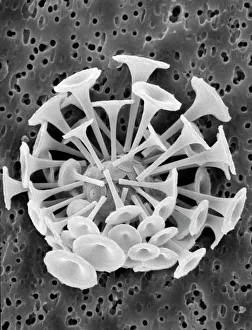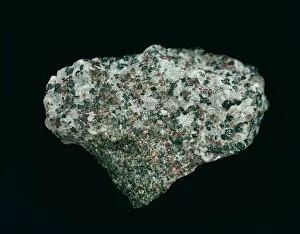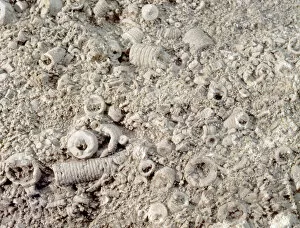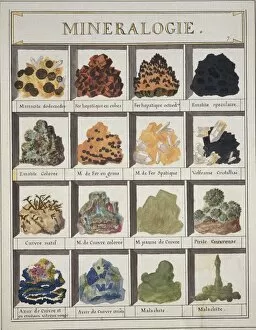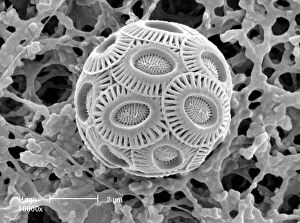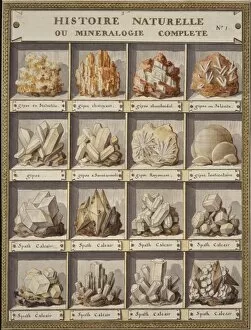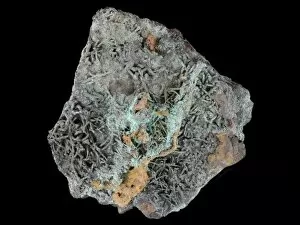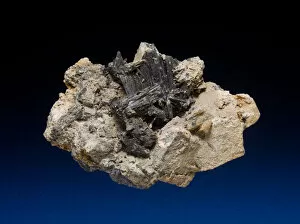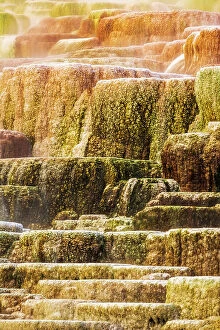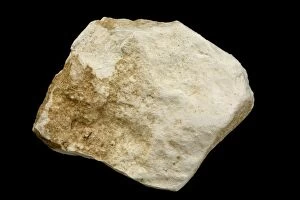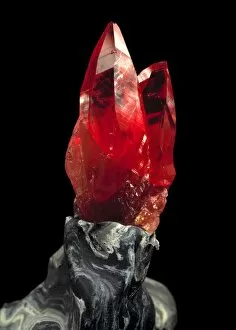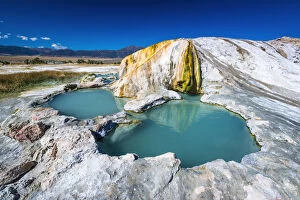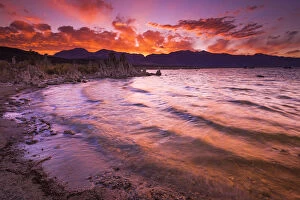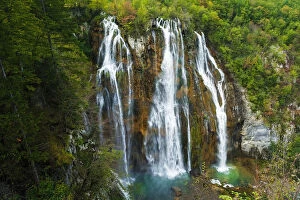Carbonate Collection
"Exploring the Fascinating World of Carbonate: From Discosphaera tubifera to Calcite" Carbonate
All Professionally Made to Order for Quick Shipping
"Exploring the Fascinating World of Carbonate: From Discosphaera tubifera to Calcite" Carbonate, a compound that plays a significant role in various natural formations and organisms, has captivated scientists for centuries. In Plate 7a from Histoire naturelle (1789), we witness the intricate beauty of Discosphaera tubifera, a coccolithophore adorned with delicate calcareous plates. Similarly, Plate 1 showcases another stunning coccolithophore called Emiliana huxleyi, whose coccoliths contribute to the formation of mesmerizing white cliffs. But carbonate's influence extends beyond marine microorganisms. Coelosphaeridium, a calcareous alga depicted here, demonstrates how this compound is utilized by diverse life forms for structural support and protection. Franklinite, an intriguing zinc ore found in nature's treasure troves, also contains traces within its composition. Iceland spar stands as a testament to carbonate's optical properties; this transparent variety of calcite exhibits double refraction when light passes through it – an enchanting phenomenon observed since ancient times. Oolitic limestone further exemplifies carbonate's ability to form unique geological structures like spherical grains cemented together over time. In mining regions such as East Pool Mine in Cornwall, England, chalcopyrite with malachite reveals the presence of copper carbonates alongside other minerals. Malachite itself can be found at North Wheal Basset mine nearby – showcasing vibrant green hues formed through copper oxidation processes. Cerussite on Galena and Baryte specimens discovered in Wirksworth demonstrate how lead carbonates interact with other minerals underground under specific conditions. Finally, Calcite from Ball Eye Mine serves as evidence that Derbyshire holds rich deposits where this versatile compound thrives. From microscopic organisms shaping our oceans' ecosystems to breathtaking geological wonders and valuable mineral resources, carbonate continues to amaze us with its diverse forms and functions.

